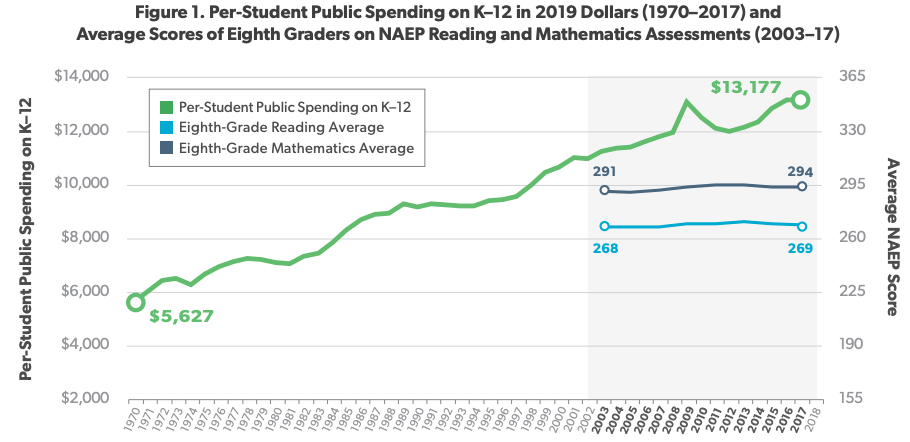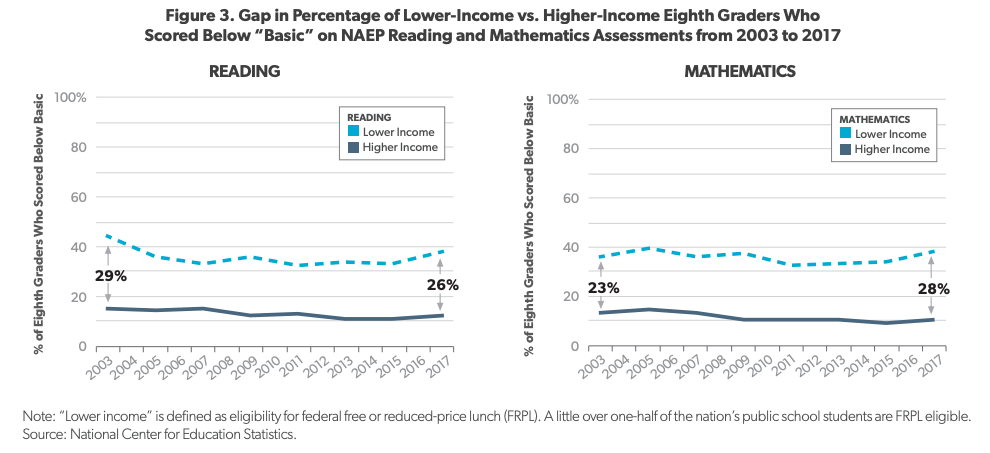‘Still left behind’: Achievement outcomes of low-income students persistently low
A report the Center released in July calls attention to the little progress Minnesota’s public school system has made addressing educational disparities and shortcomings over the years, despite continued increases in K-12 spending. And our students are paying the cost: too many are being left behind in the shadow of success.
A recent report by the American Enterprise Institute echoes similar findings in Minnesota and other states as well.
Authors Katharine Stevens and Meredith Tracy highlight national assessment data broken down by student subgroups to reveal the true extent of achievement gaps that often get masked by state average scores. AEI’s report also pairs these test results with the per-student cost it took to produce the outcomes.
With a focus on lower-income student proficiency in reading and mathematics, “Still Left Behind: How America’s Schools Keep Failing Our Children” shows, among other things, that large proportions of lower-income eighth graders still fail to demonstrate minimum levels of competence in reading and math and that achievement gaps between lower-income and higher-income eighth graders continue to persist.
The report tracks assessment scores from 2003-2017. You can read the report in its entirety here and access specific state data here. Below are the highlights on Minnesota.
Despite steadily increasing per-student spending, achievement scores in math and reading close to flat.
This study looks at student scores on the National Assessment of Educational Progress (NAEP) tests from 2003, when it was administered under the No Child Left Behind (NCLB) school reform law, to 2017, the last NAEP assessment administered under NCLB before it was replaced with the Every Student Succeeds Act. As you can see from Figure 1, per-student public spending on K-12 education in Minnesota has pretty much steadily increased over the years, and yet state average eighth-grade achievement scores have remained close to flat.

Performance is more concerning among lower-income students, with large percentages failing to meet even the basic level of reading and math competence.
While the above state average scores don’t show much to celebrate, disaggregating the scores by income shows more concerning levels of lack of competence and persistent achievement gaps. (Figure 2 and Figure 3)


“A basic level of competence in reading and math seems a reasonable outcome to expect from eight or nine years of full-time schooling,” Stevens and Tracy write. “But this study illuminates the persistent failure of K-12 schooling to accomplish that outcome for large proportions of eighth graders.”